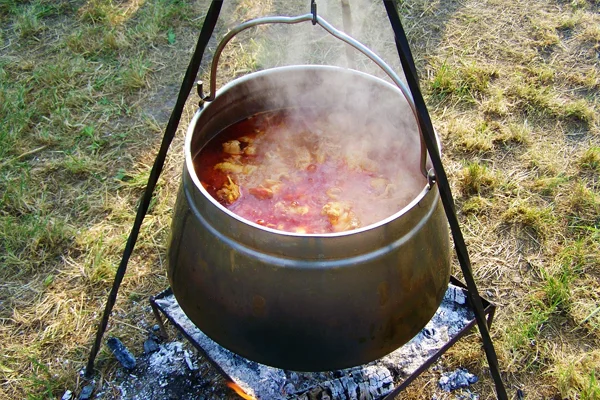Hungarian cuisine - an exciting mix of down-to-earth flavours, spice and sophistication
A feast of flavours and traditions.

Hungarian cuisine is one of the most distinctive and diverse in Central Europe. It combines centuries-old traditions, regional specialties, and a pronounced love for bold flavors. Hearty, spicy, and often rich – this is how Hungary’s culinary identity can best be described.
From goulash to paprika dishes to sweet pastries: Hungarian cuisine offers an impressive range of delicacies.
Historical Influences on Hungarian Cuisine
Hungarian cuisine is deeply rooted in the country’s history. The Magyars, who settled in present-day Hungary in the 9th century, brought nomadic cooking traditions – including open-fire cooking and preparing meat dishes in cauldrons. Over the centuries, the cuisine was influenced by many cultures, including Turkish, Austrian, Slavic, and German. Especially during the Habsburg era, many new ingredients and techniques were incorporated into Hungarian culinary arts.
Characteristic Ingredients
Hungarian cuisine is known for its generous use of spices, especially paprika – the national spice par excellence. Other typical ingredients include:
- Onions and garlic
- Pork, beef, and poultry
- Sour dairy products like sour cream
- Fresh vegetables such as bell peppers, tomatoes, cabbage, and potatoes
- Herbs like marjoram, dill, and parsley
A hallmark of many Hungarian dishes is the combination of sweet, sour, and spicy – often in a single dish.
Hungarian Cuisine Classics
Gulyás (Goulash)
Originally a shepherd’s stew, Gulyás is now Hungary’s most famous dish. It is a hearty soup made with beef, potatoes, paprika, and onions – seasoned with lots of sweet paprika.
Pörkölt and Paprikás
Both are stews, often made with beef, pork, or poultry. The difference: Paprikás is refined with sour cream. Both are traditionally served with Nokedli (Hungarian dumplings) or potatoes.
Lángos
A popular snack: deep-fried yeast dough, usually topped with garlic, sour cream, and grated cheese. Lángos is especially popular at markets or street festivals.
Hortobágyi Palacsinta
Stuffed pancakes with meat ragout, baked with paprika sauce – a typical example of the finesse of Hungarian cuisine.
Halászlé (Fisherman’s Soup)
A spicy fish soup, especially popular along the Danube and Tisza rivers. It is made with freshwater fish and plenty of red paprika.
Hungarian Desserts
Hungarian cuisine is also renowned for its desserts:
Dobos Torte: A multi-layered cake with chocolate buttercream and a caramelized sugar crust.
Rétes: Hungarian strudel, filled with apples, cherries, quark, or poppy seeds.
Gundel Palacsinta: Pancakes filled with walnuts, raisins, and rum, served with warm chocolate sauce.
Typical Hungarian Beverages
Unicum: A Hungarian herbal liqueur, served as both an aperitif and a digestif.
Pálinka: A fruit brandy made from apricots, plums, or pears – strong in flavor and alcohol content.
Tokaji Wine: The famous sweet wine from the Tokaj region, also known as the "Wine of Kings, King of Wines."
Regional Variety
Hungary is rich in culinary regions. In Szeged, for example, fish soup is particularly spicy, while in Debrecen smoked sausage products dominate. In Transdanubia, baking with poppy seeds and nuts is common, while in northern Hungary hearty stews prevail.



